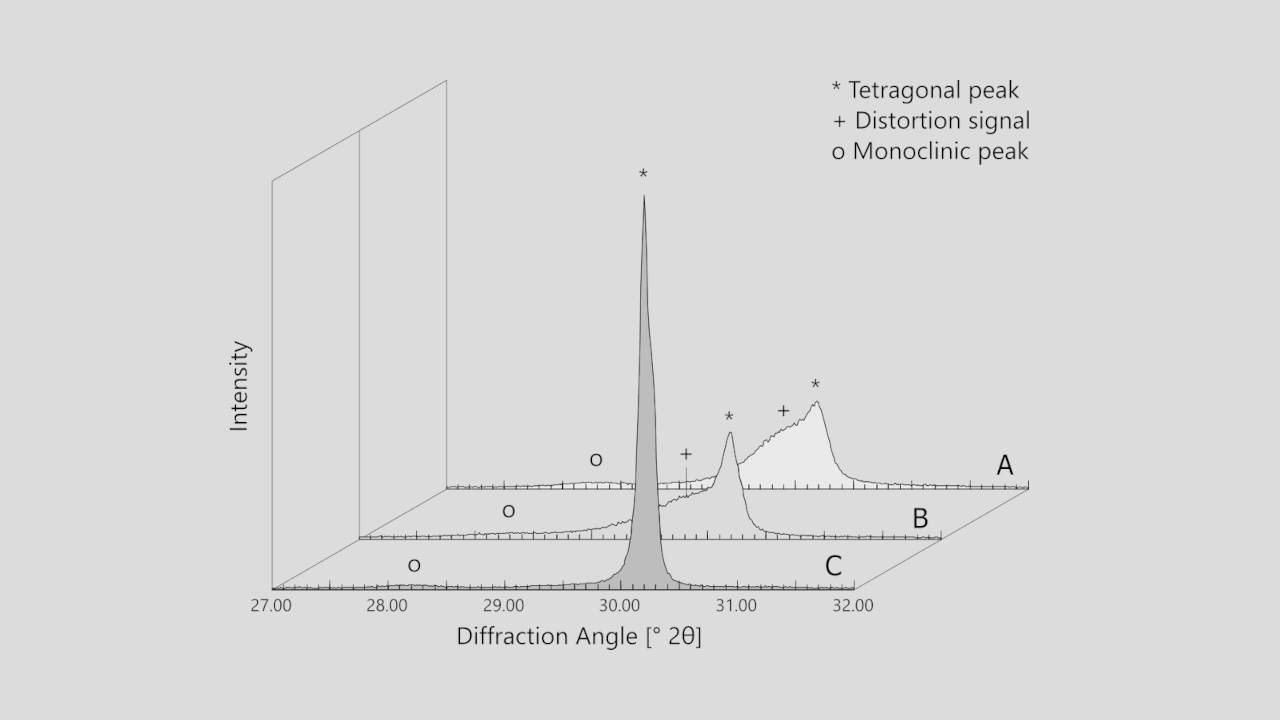Y-stabilized zirconia polycrystal (Y-TZP) is an exceptionally hard
and tough ceramic material which can transform to a mechanically weak monoclinic phase. To ensure lasting stability of Y-TZP implants, RMS now offers an accredited material verification service.
A brief history of zirconia
When Garvie et al. published an article entitled “Ceramic Steel?” in Nature in 1975, interest in zirconia (ZrO2) for application in skeletal and dental implants was sparked. Due to its exceptionally high hardness, toughness, wear resistance, chemical resistance, and its aesthetic appearance, zirconia seemed to be perfectly suited for load-bearing orthopedic and dental implant components. However, the success story was overshadowed by a series of roughly 400 implant failures between 1988 and 2001, which was associated with a transformation of the tetragonal phase of zirconia to the monoclinic phase at the implant surface. In the following years, research efforts focused on stabilizing the tetragonal phase by chemical modifications, of which the enrichment of ZrO2 with small amounts of Y2O3 emerged as one of the most promising compositions. Nowadays, yttria-stabilized tetragonal zirconia polycrystal (Y-TZP) is a staple material for orthopedic and dental implant development.
Low-temperature degradation
The transformation to the mechanically weak monoclinic phase is promoted by direct contact with water. It causes a local volume expansion which leads to disintegration of the implant surface due to stress and crack formation. A low initial amount of monoclinic phase on the surface is thus key for a maximized lifetime of an implant.
Transformation toughening
Transformation of Y-TZP to the monoclinic phase also occurs as a result of externally induced mechanical stress, for example an impact or the formation of a crack. Interestingly, in these scenarios the same phase transformation blocks the propagation of cracks and is thus a major factor contributing to the exceptionally high toughness of Y-TZP.
Quantification of phases
The different phases can be quantified by X-ray diffraction (XRD). However, certain processing steps can result in surface stress which causes distortions in the XRD signal (Fig. 1) and limits the accuracy of the phase quantification. At RMS Foundation, we offer the quantitative analysis of monoclinic phase as an ISO 17025-accredited service. Our method is compliant with ISO 13356:2015 and was optimized to yield accurate results also in the presence of tetragonal signal distortions.

